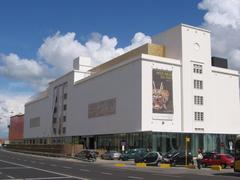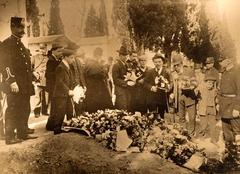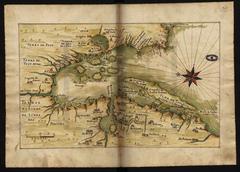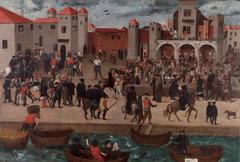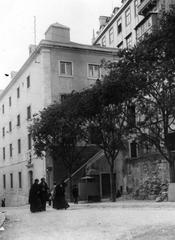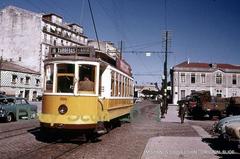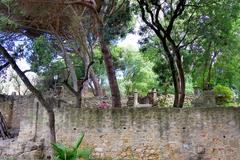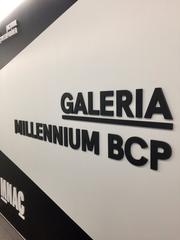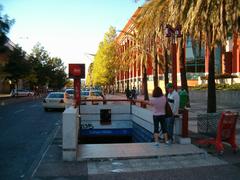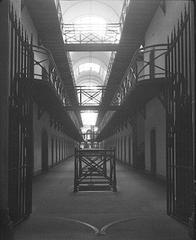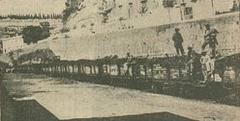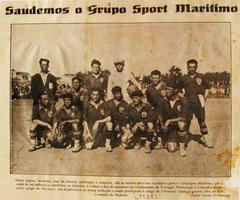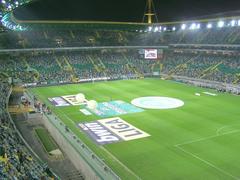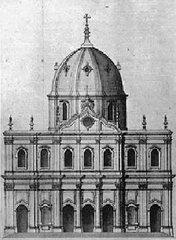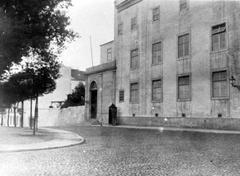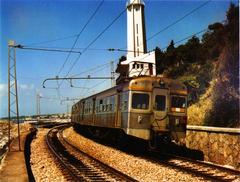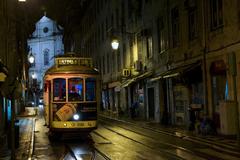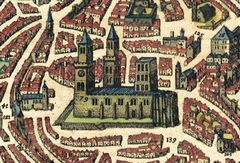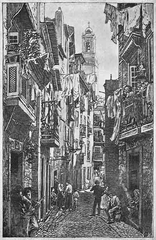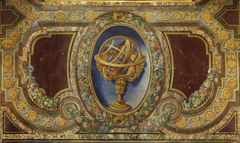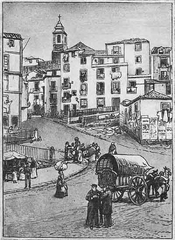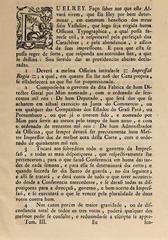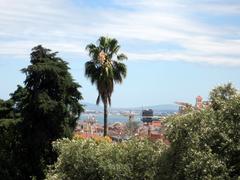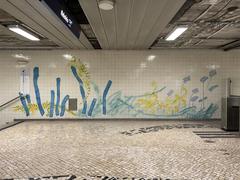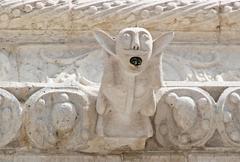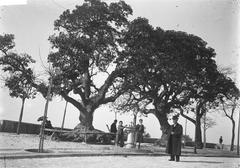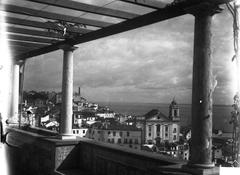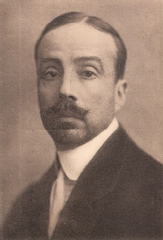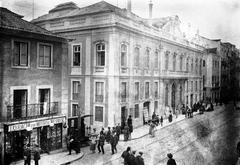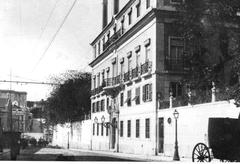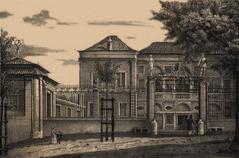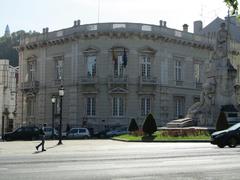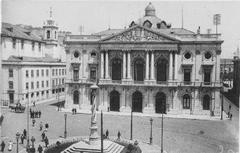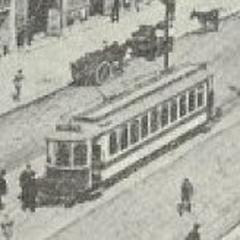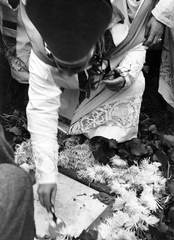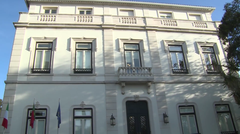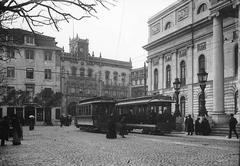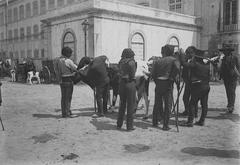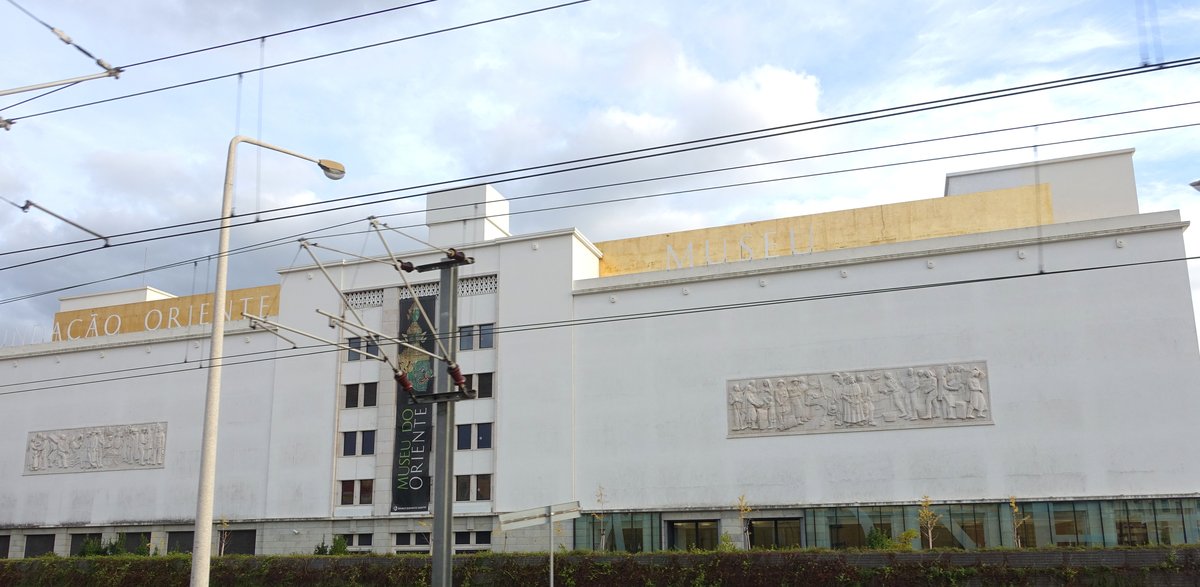
Edifício Pedro Álvares Cabral , Antigos Armazéns Frigoríficos Do Bacalhau, Actual Museu Do Oriente
Visiting Museu do Oriente: Hours, Tickets, and Highlights
Date: 18/07/2024
Introduction
Nestled in the heart of Lisbon, the Museu do Oriente serves as a captivating gateway to the rich tapestry of Asian art and culture. Established in 2008 and housed in the historic Doca do Alcântara, a former codfish warehouse, this museum is a testament to Portugal’s maritime legacy and centuries-long interactions with Asia. Its extensive collections, ranging from ancient sculptures to intricate textiles and Buddhist art, offer a comprehensive overview of the diverse cultures of Asia. Driven by the Fundação Oriente, the museum aims to foster cross-cultural understanding and appreciation through dynamic programming, educational initiatives, and public events. Whether one is a history enthusiast, an art lover, or a curious traveler, the Museu do Oriente promises an enriching experience that celebrates the interconnectedness of East and West.
Table of Contents
- Introduction
- Explore the Rich History and Cultural Significance of Museu do Oriente
- Explore the Rich Collections and Exhibitions
- Comprehensive Guide to Visiting
- Conclusion
Explore the Rich History and Cultural Significance of Museu do Oriente
A Legacy Forged in Exploration and Exchange
The Museu do Oriente stands as a testament to Portugal’s long and intricate relationship with the East. Housed in a former codfish warehouse – once a bustling hub of Lisbon’s maritime trade – the museum’s very foundation speaks to the historical ties it seeks to explore.
From Warehouse to Repository of Eastern Cultures
Constructed in the 1940s, the Doca do Alcântara served as a vital part of Portugal’s thriving codfish industry. Its high ceilings and expansive spaces have now been repurposed to showcase the artistic and cultural heritage of the Orient. The transformation began in the late 20th century, driven by the vision of the Fundação Oriente, established in 1988 to promote cultural exchange between Portugal and the East.
The Fundação Oriente - A Driving Force
The Fundação Oriente recognized the need for a dedicated space to house and exhibit its vast collection of Asian art and artifacts. Under their guidance, the building underwent extensive renovations led by architect João Luís Carrilho da Graça, blending its industrial heritage with contemporary design elements.
The Collection - A Journey Through Time and Cultures
The museum’s collection, largely assembled by the Fundação Oriente, includes a wide range of artifacts, from ancient sculptures and intricate textiles to delicate ceramics and ornate masks. The collection is organized geographically, allowing visitors to embark on a journey through different regions of the Orient, reflecting the breadth and depth of artistic traditions across Asia.
Explore the Rich Collections and Exhibitions
The Kwok On Collection
The Kwok On Collection, donated by the businessman of the same name, forms the foundation of the Museu do Oriente, comprising over 13,000 pieces.
Highlights:
- Chinese porcelain: A vast array of porcelain pieces from different dynasties.
- Buddhist art: Sculptures, paintings, and ritual objects from various Asian countries.
- Textiles and costumes: Silk robes, embroideries, and ceremonial garments from China, Japan, and India.
The Portuguese Presence in Asia
This section explores the history of Portuguese exploration and trade in Asia.
Highlights:
- Namban art: Japanese art depicting the arrival of Portuguese traders.
- Indo-Portuguese furniture: Hybrid furniture blending European and Indian styles.
- Maps and navigational instruments: Artifacts illustrating Portuguese voyages of discovery.
Religious Art of Asia
This section delves into the diverse religious traditions of Asia.
Highlights:
- Hindu sculptures: Carved stone and bronze sculptures depicting Hindu deities.
- Tibetan Buddhist art: Thangkas, ritual objects, and masks used in ceremonies.
- Islamic calligraphy: Manuscripts and decorative objects featuring Arabic calligraphy.
Performing Arts of Asia
This section celebrates the richness and diversity of Asian performing arts.
Highlights:
- Masks: Used in traditional dances, rituals, and theatrical performances.
- Indonesian Wayang Kulit puppets: Shadow puppets used in traditional storytelling.
- Japanese Noh theater masks: Masks used in classical Japanese dance-drama.
Temporary Exhibitions
The museum hosts a dynamic program of temporary exhibitions focusing on specific themes, artists, or regions of Asia. For current and upcoming exhibitions, visit the museum’s official website.
Comprehensive Guide to Visiting
Opening Hours and Ticketing
Visiting Hours:
- Tuesday to Sunday: 10:00 AM to 6:00 PM (last admission at 5:30 PM)
- Closed: Mondays, January 1st, May 1st, and December 25th
Ticket Prices:
- General Admission: €10
- Seniors (over 65) and Students: €7.50
- Children (under 12): Free
- Family Ticket (2 adults + 2 children): €25
- Free Admission: Every Friday from 6:00 PM to 10:00 PM
Purchasing Tickets:
- On-site: At the museum’s ticket counter.
- Online: Museu do Oriente website.
Getting There
Located in the Belém district, the Museu do Oriente is accessible by public transportation:
- Bus: Routes 728, 714, 729, 751, and 201.
- Tram: Tram 15E stops at ‘Centro Cultural de Belém.’
- Train: ‘Belém’ station on the Cascais line, a 10-minute walk from the museum.
By Car: Parking can be limited; consider using public transportation or taxis.
Accessibility
The museum is fully accessible:
- Wheelchair Accessibility: Ramps, elevators, and adapted restrooms.
- Visual Impairments: Tactile models and audio guides available upon request.
- Hearing Impairments: Sign language interpretation for guided tours upon request.
Facilities
- Museum Shop: Books, crafts, and souvenirs inspired by the museum’s collection.
- Café: Light meals, coffee, and refreshments with scenic views of the Tagus River.
- Restrooms: Located on multiple floors.
- Cloakroom: Available for storing belongings.
Tips for Your Visit
- Allocate Sufficient Time: Plan at least 2-3 hours.
- Start with the Permanent Collection: Begin on the upper floors.
- Don’t Miss the Temporary Exhibitions: Check the museum’s website for current exhibitions.
- Join a Guided Tour: Enhance your understanding of the collection.
- Take Advantage of Free Admission: Visit on Friday evenings for free admission.
- Combine with Other Belém Attractions: Nearby attractions include Jerónimos Monastery and Belém Tower.
- Check the Museum’s Website: For up-to-date information, visit the Museu do Oriente website.
Exploring the Collection
Permanent Collection:
- Southeast Asia: Textiles, masks, and sculptures.
- China: Porcelain, jade, furniture, and Buddhist art.
- Japan: Samurai armor, swords, woodblock prints, and ceramics.
- India: Textiles, miniature paintings, and religious sculptures.
Temporary Exhibitions: Rotating exhibitions on specific themes or regions.
Photography
Photography for personal use is generally allowed, but flash photography and tripods are prohibited. Be mindful of specific signage regarding photography.
Dining and Accommodation
While the museum has a café, Belém offers numerous dining options and a variety of accommodation choices, from boutique hotels to international chains.
Nearby Attractions
- Jerónimos Monastery: A UNESCO World Heritage site.
- Belém Tower: An iconic tower and UNESCO World Heritage site.
- Monument to the Discoveries: Celebrates Portugal’s Age of Discovery.
- Pastéis de Belém: Famous custard tarts.
Special Events and Photographic Spots
The museum hosts special events, including festivals, workshops, and lectures. Its architecture and surroundings offer numerous spots for capturing memorable shots.
FAQ
Is there a dress code for visiting the museum?
- Comfortable clothing and shoes are recommended.
Can I bring my own food and drinks into the museum?
- Outside food and drinks are not allowed.
Are pets allowed in the museum?
- Pets are not allowed, except for service animals.
Conclusion
The Museu do Oriente stands as a beacon of cultural exchange, offering an unparalleled journey through the artistic and historical landscapes of Asia. Its extensive collections and commitment to accessibility, education, and dynamic programming ensure it remains a vital resource for fostering cross-cultural understanding. With its strategic location in Belém, visitors can easily combine their museum visit with other historical attractions. The Museu do Oriente continues to bridge cultures and promote appreciation for the artistic legacies of Asia, making it a timeless treasure in Portugal’s cultural landscape.

